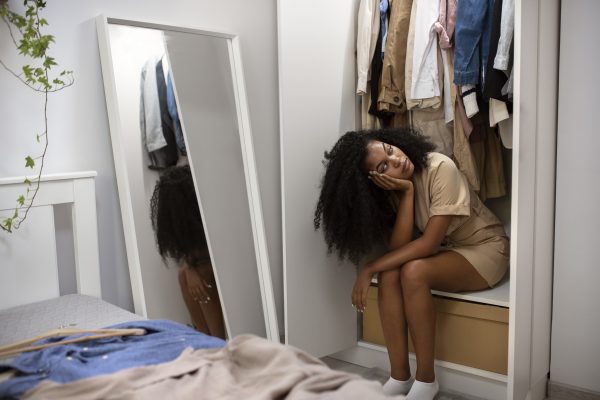Freedom is something we often relate with dance. The freedom of expression, the freedom of movement. But what about the freedom of body confidence? The bodies of dancers in ballet in particular are constantly scrutinised, the expectation being a cinched-in waist and strong yet slender legs. The lines they make with their limbs should be poised and precise, not an ounce of extra weight in sight.
A large majority of the insecurities that dancers contend with go back to the battle with their own reflection. They’re surrounded by full-length mirrors 24/7, reminding them of how they look and inviting them to compare their own bodies to those of their fellow dancers. Sally A Radell wrote a paper on mirrors within the dance studio and concluded that “mirrors have the ability to entice individuals to see themselves externally as objects, and imagine how others view them in comparison to other dancers”. It’s been reported that on average women spend around 55 minutes per day looking in the mirror. Imagine spending between six and seven hours a day looking in the mirror. You’d be bound to knock yourself down, picking out things you’d change.
When many of us first watched Black Swan, we were probably in complete awe of how beautiful Natalie Portman and Mila Kunis were, exuding a certain elegance and grace with every plié and pirouette. Little did we know the pain they put their bodies through in order to make their roles come to life. Kunis admitted to dropping 20lbs for the role, devoting herself to gaining the perfect image of a dancer. She spoke to The Daily Mail about the pressure she was under. “Aesthetically, I had to look like a ballerina and hold myself like one. By the end, I was 95lb. All you saw was bone. It looked disgusting, but in photographs and on film it looked amazing.” And as for her diet? “I’m not promoting this at all, but I used to be a smoker, and so I smoked a lot of cigarettes and I ate a limited amount of calories,” she told interviewer Howard Stern on his SiriusXM show.

It’s obvious there is an issue here that leaves many dancers with self-esteem issues and even eating disorders in some cases. But fear not, there is a plus side and positive worldwide progression is underway. In 2014, director of The Royal Ballet, Kevin O’Hare, told the BBC that he wanted to make sure that psychological help was at hand for any of the ballerinas struggling mentally. Over the pond in Minnesota, USA, St Paul Ballet is also aware of the problem, teaming up with The Emily Project for a third year in 2016 during Eating Disorders Awareness Week to promote “Take Back the Tutu”, focusing on the beauty within dancers rather than the beauty on the outside. In April this year, Jade Charon, a dancer from Milwaukee, decided to make a range of body-positive leotards titled 30:11. The aim was to create dancewear to suit girls of all shapes and sizes, inspiring body confidence.
The images that you see from this shoot are another positive representation of acceptance. Dancer and photographer Freya Jenkin studies at the Northern School for Contemporary Dance and her aim was to expand people’s mind to view the body as something that is just part of you. It doesn’t have to be sexual or conform to “dancer norms”. In the images, you’ll see her classmates opening up and accepting their bodies, proving that pursuing a career in dance doesn’t always have to mean punishing your interior to achieve an aesthetically perfect exterior.




